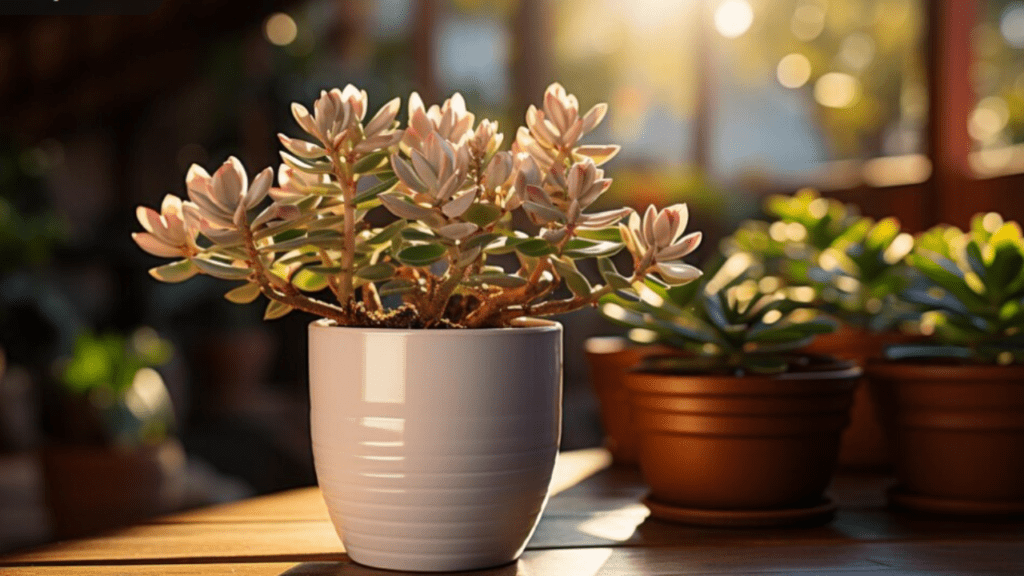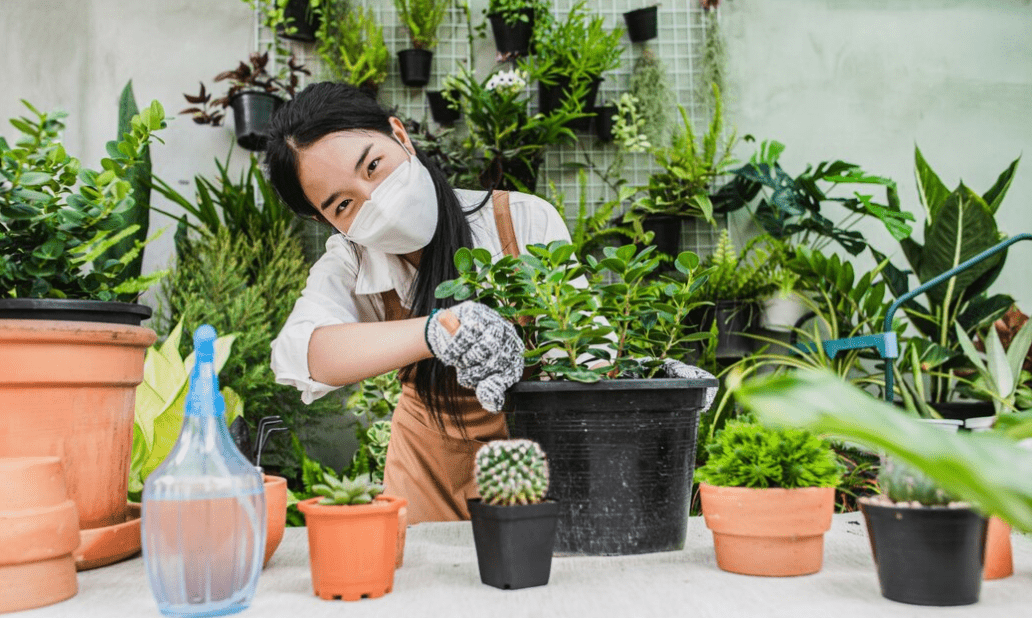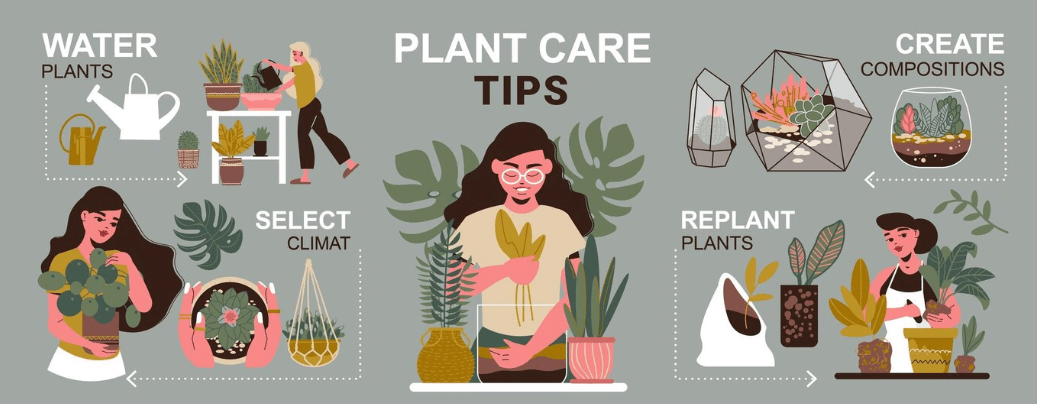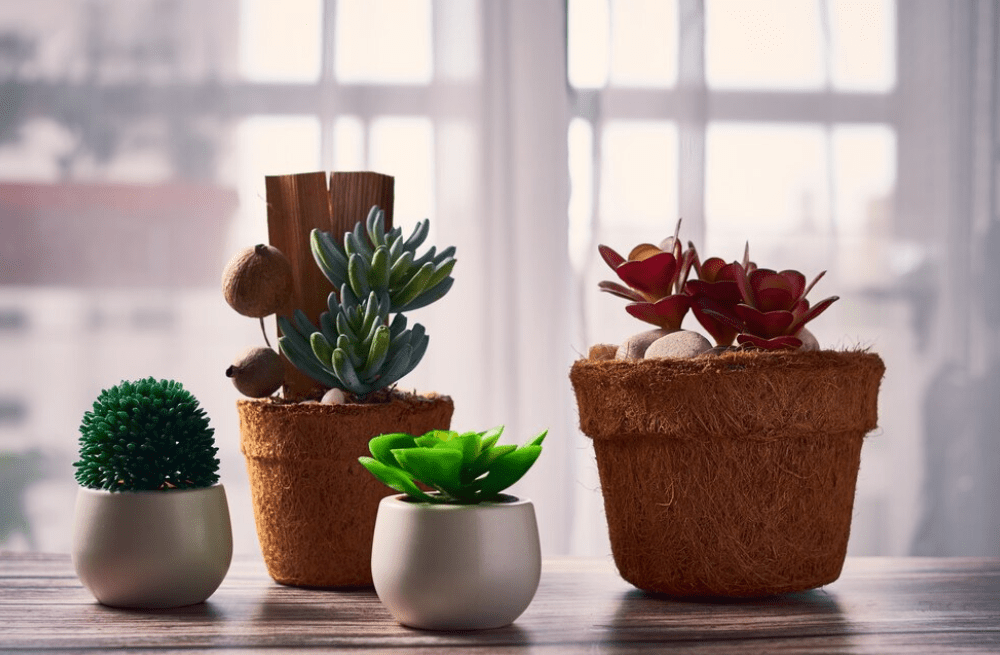
Eat, Sleep, Trap, Repeat: Unveiling the Fascination of Carnivorous House Plants
Carnivorous house plants have a unique and fascinating appeal for plant enthusiasts. In this post, we will explore the world of carnivorous plants, including the different types and how to care for and cultivate them. Whether you’re a seasoned plant lover or just curious about these intriguing specimens, this post will provide valuable insights and tips for incorporating carnivorous house plants into your collection. So, let’s dive into the captivating world of these unique and mysterious botanical wonders.
Carnivorous house plants have always piqued the interest and curiosity of plant enthusiasts around the world. The idea of a plant that can actually “eat” insects is both fascinating and somewhat mysterious. The unique adaptations of these plants, such as the Venus flytrap and pitcher plants, have captivated the imagination of both novice and experienced plant lovers. The allure of these plants lies in their ability to thrive in environments where other plants struggle, and their distinctive appearance adds an exotic touch to any collection.
The carnivorous nature of these plants adds an element of intrigue and excitement to the world of plant care. Learning about the different types of carnivorous house plants and their specific care requirements can be an exciting adventure for plant enthusiasts. From understanding their natural habitats to replicating those conditions at home, cultivating carnivorous house plants can be a rewarding and educational experience.
It’s important to note that while these plants may be intriguing, they also require specific care to thrive. Providing the right growing conditions, such as a well-draining soil mix and proper lighting, is essential for the health and longevity of carnivorous house plants. With the right care and attention, these unique plants can thrive and add a touch of exotic beauty to any indoor garden. So, if you’re looking to add a touch of awe-inspiring wonder to your plant collection, consider incorporating some carnivorous house plants into your repertoire. With the right knowledge and care, these captivating plants can bring a whole new level of fascination to your gardening journey.
Table of Contents
ToggleThe World of Carnivorous Plants
1. Explore the diversity of carnivorous house plants

to add an intriguing and unique touch to your indoor garden. From the iconic Venus flytrap to the elegant pitcher plant, there are a wide variety of carnivorous plants to choose from. Each plant has its own unique characteristics and growing requirements, making them a fascinating addition to any plant collection.
When cultivating carnivorous house plants, it’s important to understand their natural habitats and replicate those conditions at home. These plants typically thrive in nutrient-poor, acidic soils and require a high level of humidity. Providing the right growing conditions, such as a well-draining soil mix and proper lighting, is essential for the health and longevity of carnivorous house plants.
While caring for carnivorous house plants may require some extra attention and knowledge, the reward is well worth it. These unique plants can add a touch of exotic beauty to any indoor garden, and the process of cultivating them can be a rewarding and educational experience.
So, if you’re looking to add a touch of awe-inspiring wonder to your plant collection, consider incorporating some carnivorous house plants into your repertoire. With the right care and attention, these captivating plants can bring a whole new level of fascination to your gardening journey.
2. Discuss the evolutionary adaptations that have led to carnivory in plants
Carnivory in plants has evolved as a way for them to obtain essential nutrients, such as nitrogen and phosphorus, that are lacking in their natural habitats. This adaptation allows them to supplement their nutrient intake by capturing and digesting small insects and other organisms. The development of specialized structures, such as pitcher traps and sticky glands, has enabled carnivorous plants to efficiently capture and digest their prey. Over time, these evolutionary adaptations have allowed carnivorous plants to thrive in nutrient-poor environments where other plants may struggle to survive. Overall, the carnivorous behavior of these plants has developed as a survival strategy to meet their nutritional needs in challenging ecological conditions.
3. Highlight the ecological significance of carnivorous plants
Carnivorous plants play a crucial role in their ecosystems by helping to control the population of small insects and other organisms. They serve as natural pest control agents, which can help to maintain a balance in the ecosystem. Additionally, the unique adaptations of carnivorous plants allow them to thrive in environments where other plants may struggle to survive, contributing to the overall biodiversity of their habitats. By studying and conserving carnivorous plants, we can gain valuable insights into the delicate balance of ecological systems and the adaptations of organisms to their environments. Overall, these fascinating plants play an important role in their ecosystems and contribute to the overall health and diversity of plant life.
Unique Features and Mechanisms
1. Explain the various trap types found in carnivorous plants

Carnivorous plants have developed unique trap types in order to capture their prey. Some of the most common trap types include:
- Pitfall traps, which are shaped like a tube or pitcher with a slippery surface that causes insects to fall in and be unable to climb out.
- Flypaper traps, which have a sticky, glandular surface that ensnares insects when they come in contact with it.
- Snap traps, such as the Venus flytrap, which have hinged leaves that snap shut when triggered by prey, trapping the insect inside.
- Bladder traps, found in aquatic plants like the bladderwort, which use small bladder-like structures to suck in and trap small organisms.
These trap types have evolved to suit the specific needs of each carnivorous plant species, and they demonstrate the incredible adaptations that these plants have developed in order to thrive in their unique ecological niches.
2. Detail the digestion process and nutrient absorption mechanisms
The digestion process starts in the mouth, where food is broken down by chewing and mixed with saliva to begin the process of breaking down carbohydrates. From there, the food travels to the stomach, where it is mixed with stomach acid and enzymes to further break down proteins and kill harmful bacteria. The partially digested food then moves to the small intestine, where it is further broken down by enzymes and bile from the liver to release nutrients that can be absorbed into the bloodstream. The lining of the small intestine contains villi, which increase the surface area for nutrient absorption. Nutrients are then transported to the liver and then to the rest of the body for use. The waste products are passed to the large intestine and eventually eliminated from the body. This process is essential for providing the body with the nutrients it needs to function properly.
3. Discuss the morphological adaptations that carnivorous plants have developed
Carnivorous plants have developed a variety of morphological adaptations to capture and digest their prey. Some common adaptations include modified leaves that form traps, such as pitcher plants, which have tubular-shaped leaves filled with digestive fluids to trap insects. Other carnivorous plants, like sundews and Venus flytraps, have specialized structures like sticky hairs or sensitive trigger hairs that close their leafy traps when an insect comes into contact with them.
These plants have also developed mechanisms for digesting their prey, such as producing enzymes and acids to break down the nutrients from their captured insects. Additionally, some carnivorous plants have evolved to absorb nutrients through their leaves, allowing them to supplement their nutrient intake from the soil with nutrients obtained from their prey.
Overall, these morphological adaptations have allowed carnivorous plants to thrive in nutrient-poor environments and survive by supplementing their diet with nutrients obtained from their insect prey.
Cultivation and Care Tips

1. Provide guidance on light requirements for carnivorous house plants
Carnivorous plants thrive in bright, indirect light. They should receive at least 4-6 hours of sunlight per day, but be careful to avoid direct sunlight, as it can scorch the leaves of the plant. If you are growing carnivorous plants indoors, placing them near a south or west-facing window can provide the right amount of light. If natural light is insufficient, you can use artificial grow lights to supplement their light requirements. It’s important to monitor the light levels and adjust the plant’s placement accordingly to ensure they get the right amount of light to thrive.
2. Discuss watering and humidity considerations
Carnivorous plants have specific watering and humidity needs that are important to consider. These plants prefer to remain consistently moist but not waterlogged. It’s best to use distilled water or rainwater rather than tap water, as tap water may contain minerals that can harm the plants. You can also water carnivorous plants with a tray method, where the plant sits in a shallow dish of water. This allows the plant to draw up water as needed while also increasing the humidity around the plant. Speaking of humidity, carnivorous plants thrive in environments with high humidity, so consider using a humidifier or placing the plants on a humidity tray to maintain the ideal conditions for their growth. By paying attention to their light, water, and humidity needs, you can help carnivorous plants thrive in your care.
3. Offer advice on soil substrate and potting mediums
When it comes to soil substrate and potting mediums for carnivorous plants, it’s important to choose the right materials to ensure their health and growth. Carnivorous plants thrive in acidic, low-nutrient soils, so it’s best to use a soil mix that is composed of ingredients such as peat moss, perlite, and sand. This will provide the proper drainage and aeration that these plants need. Avoid using regular potting soil, as it contains nutrients that carnivorous plants cannot tolerate. Instead, look for specialized carnivorous plant potting mixes that are available at gardening stores or create your own mix based on the needs of the specific plant species you are caring for. Additionally, consider using live sphagnum moss as a top dressing for the soil, as it can help maintain moisture levels and provide additional nutrients to the plants. By choosing the right soil substrate and potting mediums, you can create an optimal environment for your carnivorous plants to thrive.
4. Explain feeding methods and precautions for carnivorous plants
Feeding carnivorous plants can be a fascinating process, but it’s important to do it correctly to ensure the health of the plants. Carnivorous plants mainly get their nutrients from the insects and other small organisms they capture. It’s important to avoid feeding them large insects or other creatures that could potentially harm the plant during digestion. Instead, provide small, live insects such as fruit flies, ants, or small crickets. Be sure to only feed them as much as they can consume in about a day or two to avoid mold or rotting in the plant’s digestive system. It’s also important to use non-fertilized insects, as the extra nutrients in fertilized insects can be harmful to the plant. Lastly, be cautious when handling the plant during feeding to avoid any potential damage to the delicate structures. With proper feeding methods and precautions, carnivorous plants can thrive and flourish in their environment.
Popular Carnivorous House Plants

1. Profile well-known carnivorous plants such as Venus flytraps, pitcher plants, sundews, and butterworts
Venus flytraps are among the most well-known carnivorous plants, with their unique snapping traps that close around insects. Pitcher plants have pitcher-shaped leaves that trap insects and digest them with enzymes. Sundews have sticky tentacles that capture insects, and butterworts use sticky leaves to capture their prey. These plants are fascinating additions to any garden or collection, but it’s important to understand how to care for them properly. When feeding these plants, it’s important to avoid giving them large insects that could potentially harm the plant during digestion. Instead, provide small, live insects such as fruit flies, ants, or small crickets. It’s crucial to only feed them as much as they can consume in about a day or two to avoid mold or rotting in the plant’s digestive system. Additionally, using non-fertilized insects is important, as the extra nutrients in fertilized insects can be harmful to the plant. Lastly, be cautious when handling the plant during feeding to avoid any potential damage to the delicate structures. With proper feeding methods and precautions, carnivorous plants can thrive and flourish in their environment.
2. Provide information on the unique characteristics and care requirements of each species
Caring for carnivorous plants requires a good understanding of their unique characteristics and care requirements. Each species has its own specific needs, so it’s important to do your research and understand how to properly care for each type of plant. For example, pitcher plants require a well-drained soil mix and high humidity, while Venus flytraps need moist, nutrient-poor soil and lots of light. It’s important to provide the right growing conditions, such as a sunny location and the right type of soil, to ensure the health and vitality of your carnivorous plants. Proper feeding is also crucial, as these plants rely on insects for their nutrients. It’s important to provide small, live insects such as fruit flies or small crickets, and to be cautious and avoid overfeeding to prevent any damage to the plant. By understanding the unique characteristics and care requirements of each species, you can ensure the well-being of your carnivorous plants and help them thrive in their environment.
Benefits of Growing Carnivorous House Plants
1. Discuss the role of carnivorous plants in pest control in indoor environments
Carnivorous house plants can play a valuable role in pest control in indoor environments. These plants have adapted to trap and consume insects as a source of nutrients, making them a natural and chemical-free way to manage pests in your home. By introducing carnivorous plants into your indoor space, you can help control common pests such as fruit flies, gnats, and mosquitoes. These plants are particularly effective in areas where traditional pest control methods may not be practical, such as in small, enclosed spaces. Additionally, growing carnivorous plants can also be a fascinating and educational experience, as you observe these unique plants in action. Overall, incorporating carnivorous plants into your indoor environment can not only help manage pests but also add an interesting and beneficial element to your home.
2. Highlight the educational value of cultivating carnivorous plants
Cultivating carnivorous plants can be a great educational experience for people of all ages. It allows you to learn about the unique adaptations and biology of these fascinating plants. By understanding the specific care requirements of each species, you can also develop valuable skills in plant care and horticulture. Additionally, the process of observing carnivorous plants capturing and consuming insects can provide valuable insights into the natural world and the intricate relationships between plants and animals. Overall, cultivating carnivorous plants can offer a hands-on and engaging educational experience that can inspire curiosity and a deeper appreciation for the natural world.
3. Explore the aesthetic appeal of carnivorous house plants in home decor
Cultivating carnivorous plants can be a fascinating and educational experience. It allows you to learn about the unique adaptations and biology of these plants, and understand their specific care requirements. Growing carnivorous plants can also add an interesting and beneficial element to your home decor. The aesthetic appeal of these plants can bring a unique and intriguing touch to your indoor environment. Additionally, the process of observing carnivorous plants capturing and consuming insects can provide valuable insights into the natural world and the intricate relationships between plants and animals. Overall, incorporating carnivorous plants into your indoor environment can not only help manage pests but also add an interesting and beneficial element to your home.
In conclusion, cultivating carnivorous house plants can be a unique and rewarding hobby for plant enthusiasts. By understanding the specific care requirements and providing the right environment for these plants, you can enjoy the fascinating and unique appeal of carnivorous house plants in your own home. Whether you are a seasoned plant enthusiast or just starting out, exploring the world of carnivorous house plants can bring a new level of fascination to your gardening experience.
Frequently asked questions And Answer
Carnivorous house plants are actually quite easy to care for, as long as you provide them with the right growing conditions. They require plenty of sunlight, distilled water, and a well-draining soil mix.
Carnivorous house plants primarily feed on small insects such as flies, mosquitoes, ants, and other tiny bugs. They use their specialized traps to capture and digest their prey.
It’s best to stick to feeding your carnivorous house plant insects, as this is what they are naturally adapted to consume. Feeding them meat or other food can potentially harm the plant.
Yes, there are several types of traps used by carnivorous house plants, including pitcher traps, snap traps, and sticky traps. Each type of trap is designed to capture and digest insects in its own unique way.
Yes, carnivorous house plants can thrive indoors as long as they receive enough sunlight and are provided with the right growing conditions. They can make a unique and fascinating addition to any indoor plant collection.
Carnivorous house plants should be watered with distilled water whenever their soil starts to dry out. It’s important to avoid using tap water or water with added minerals, as this can harm the plants.
During the winter, carnivorous house plants may require a period of dormancy. This means they may need to be kept in a cooler environment and receive less water. It’s important to research the specific care requirements for the type of carnivorous plant you have.
While carnivorous house plants are generally safe to care for, it’s important to handle them with care and avoid touching or disturbing their traps. Some species may also be toxic if ingested, so it’s best to keep them away from pets and small children.
